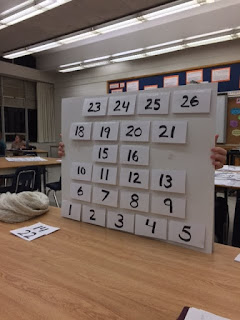In my last placement, I had the opportunity to observe and teach a few lessons in a Grade 11/12 Workplace Mathematics. What I loved about this course was that it taught students very valuable mathematics that will assist them for the rest of their lives. I found myself wishing that I could have learned about these topics in my secondary education experience. They learned topics such as banking, travel and investing money. One main thing that I noticed while observing this class was that there was lots of time spent doing research on the topics and finding the information themselves. This also teaches them how to research and search for accurate information in the future.
Planning A Night Out
The first activity in this class was about planning a night out with your friends. We were asked to choose between going to the movies or going bowling. I liked how students were given the choice of which activity they would like to do because they will be more engaged. There were 6 sections of the activity to be completed; budget, destination, transportation, cost of activity, food and beverages, and a reflection on costs and budgets. I could imagine the students at my placement enjoying this assignment because it relates to what high school students may be interested in. The next activity was very similar as we were asked to plan an ‘adventure’. We were essentially doing the same calculations, however, we were also required to use the 24 hour clock. Many travel schedules use the 24 hour clock and converting between the 12 and 24 hour clock is a valuable lesson for students.
The first activity in this class was about planning a night out with your friends. We were asked to choose between going to the movies or going bowling. I liked how students were given the choice of which activity they would like to do because they will be more engaged. There were 6 sections of the activity to be completed; budget, destination, transportation, cost of activity, food and beverages, and a reflection on costs and budgets. I could imagine the students at my placement enjoying this assignment because it relates to what high school students may be interested in. The next activity was very similar as we were asked to plan an ‘adventure’. We were essentially doing the same calculations, however, we were also required to use the 24 hour clock. Many travel schedules use the 24 hour clock and converting between the 12 and 24 hour clock is a valuable lesson for students.
Since this concludes the presentations, I can confidently say that I will be using many activities within my future classes. The ideas were very creative and many lessons turned typically dull mathematics topics, into interesting inquiry-based activities! I look forward to using these activities.









